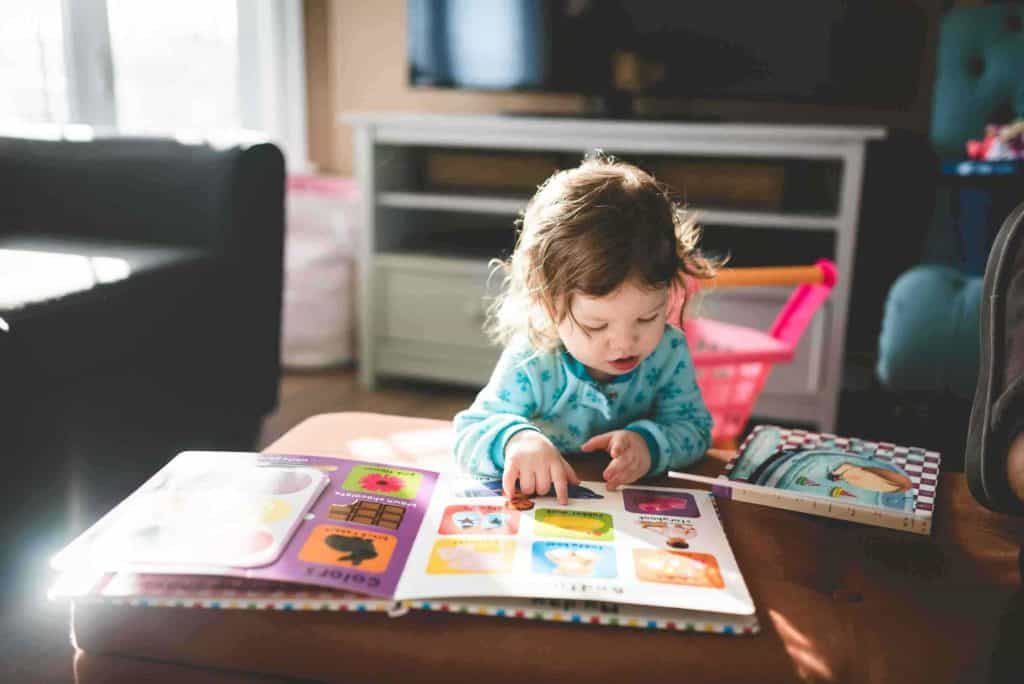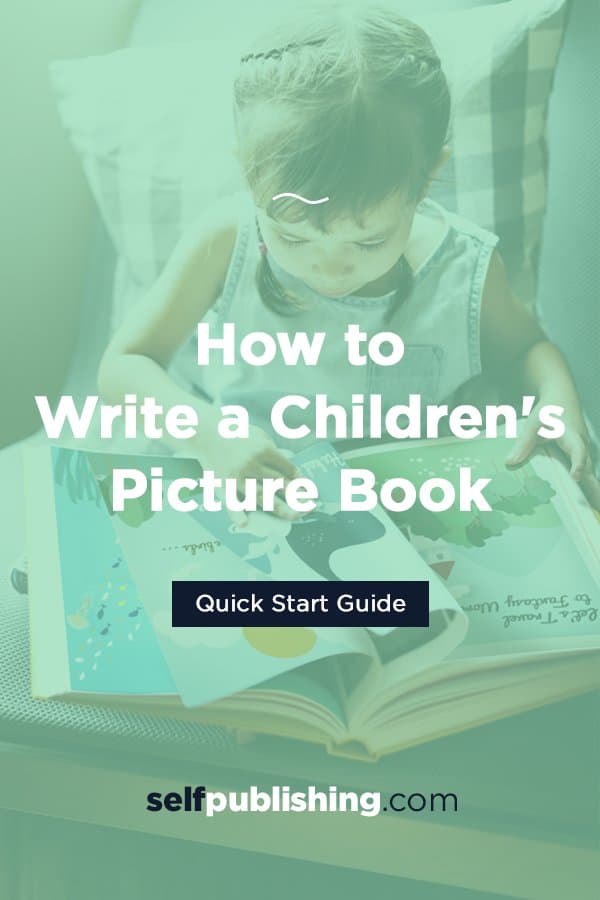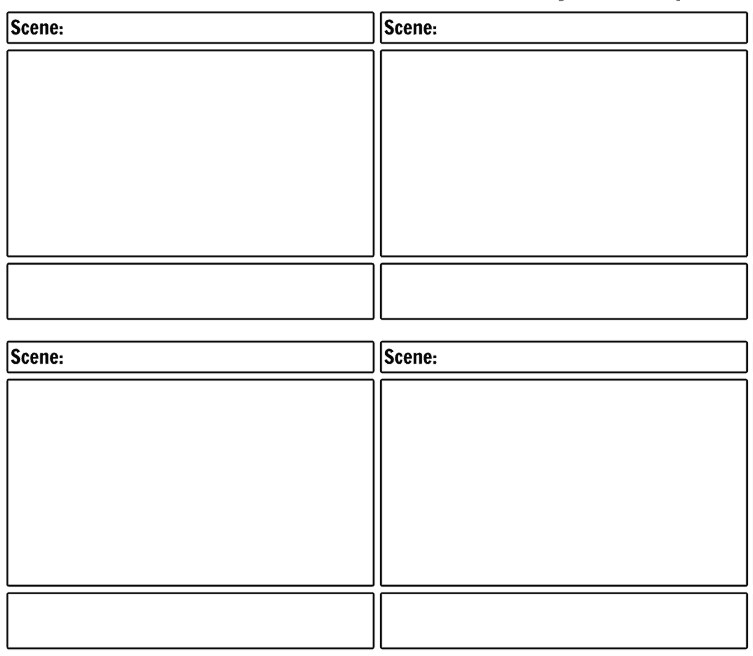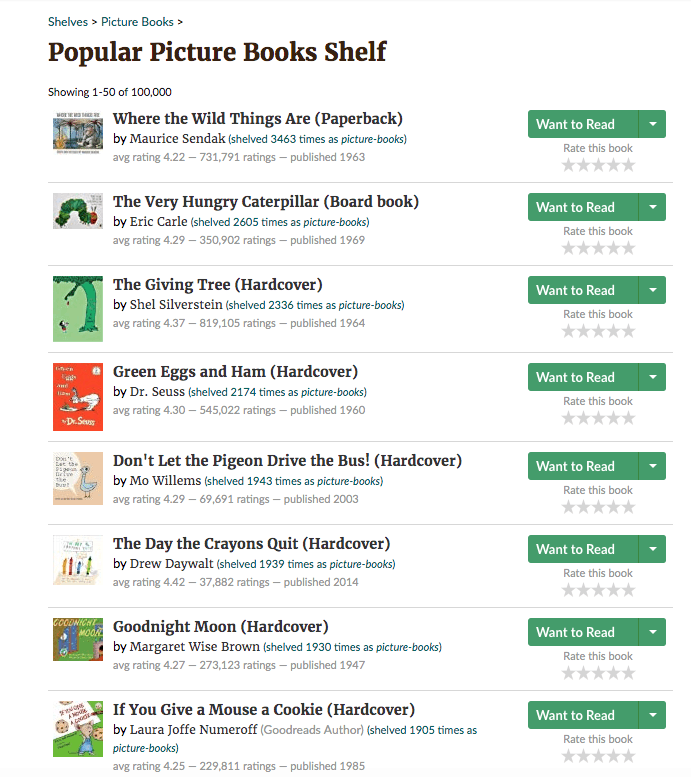If you’re researching how to write a children’s picture book, you’ve probably been touched by a children’s story at some point in your life. Now, you’re ready to start creating a picture book of your own.
What’s the first book that you remember reading/listening to as a child? Was it a picture book?
Whether it was a soothing lullaby, a gentle adventure about a bunny named Peter Cottontail, or a rhythmic, Seuss-type play on words, it probably had colorful illustrations on almost every page.
There is a booming children’s picture book market, and for good reason. Picture books are FUN. Dare I say, they are the most fun way to learn how to read. So, why not learn how to write a children’s picture book yourself? It can be an incredibly rewarding experience.
Today, we’ll provide you with a step-by-step guide to learn how to write a children’s picture book. But before we get started on the details of creating a picture book, let’s discuss what they are and why they are so important in the world of literature.
What is a children’s picture book?
A children’s picture book is a book written for young readers that is composed of text paired with visual illustrations, pictures, or images to tell the story.
When learning how to make a picture book, the word choice should be considered carefully. You want to text to make the age and reading level of your target audience.

How to write a children’s picture book in 11 simple steps
Here are the steps you should follow to learn how to write a children’s picture book successfully:
1. Find your idea
The first step in learning how to write a children’s picture book is to zone in on your big idea.
Why are you learning how to make a picture book? You have a story that needs to be told!
Maybe you’ve jotted some preliminary ideas in a notebook; or maybe the first draft has been filed away on your laptop for 10 years.
Whatever your idea for writing a children’s picture book is, it’s time to bring it to life.
As you begin, it’s important to keep in mind that sometimes a story that you want to write is fraught with such deep, personal emotions that the story just doesn’t end up sounding like a story for a child.
My advice to you: Give your life experience to a fictional character, tone it way, way down, and make a happy ending!
If your story is likely to traumatize a child, your chances of selling it as a children’s picture book are slim.
Or, maybe you have what it takes to write a winning story, but have no idea what to write about.
Here are some suggestions for finding inspiration for your children’s picture book:
- Go to the children’s section at your local library and browse the shelves. Take note of any topics that stick out to you.
- Search the internet for lists of children’s popular book themes
- Ask kids what topics they are interested in and what they like to read about.

2. Focus on your target audience
Who will be reading your book? Who will be buying your book? These are important questions to work through when learning how to write a children’s picture book.
Since we’re discussing writing children’s picture books, you might assume your audience is children.
And, sometimes, it will be the child who sees your brightly-colored cover or reads the catchy title, and says, “Dad! I want this book!” But it’s usually the parent, grandparent, doting aunt, or classroom teacher who is out shopping for children’s books.
Keep both shopper and reader in mind as you plan your children’s picture book.
Parents and teachers want a story that is fun to read aloud, so as you write the book, you’ll want to practice reading each line aloud, making sure the words flow without tripping up the tongue.
Teachers choose read-aloud books for one of the following reasons:
- Your book fits their list of grade-level topics they must teach (butterflies, frogs, honesty, friendship, bullying, etc.)
- The illustrations drew them to your book, and your story touched their hearts.
- Your book is written at a specific reading level for small literacy groups.
- They heard about your book and simply must read it to the class!
Just think about it: There are always kids at every level of reading. Babies and eager nonreaders…young children just learning how to read…older kiddos who are now reading to learn…and adults reading your book to their children and grandchildren.
You have to think of your target reader, and keep them in mind as you learn how to write a children’s picture book.
3. Choose a topic you know very well
The next step in learning how to write a children’s picture book is to decide on a topic that you can write about with ease.
This means you’ll want to know a lot about your topic, so that you prevent making amateur mistakes. You should know your topic well enough to teach it, or explain it, to children.
Some ideas for children’s picture book topics are:
- A childhood experience (loose tooth, siblings, first day of school, tree climbing…)
- A topic you have researched thoroughly (maybe one that’s in line with your profession)
- An activity you’ve participated in (sports, music, ballet, skating…)
- An event you witnessed firsthand, as a mom/dad/grandma/grandpa…
For example, when I wrote my first children’s book, Grandpa’s Tree, I was a new grandma, totally infatuated with my three-year-old grandson. We went on nature walks and I learned to appreciate the long-forgotten world of tiny critters.
But no one wants to read about how wonderful my grandson is to me. So I jotted down blurbs and phrases about our walk…which triggered memories of my own childhood.
Experiences from two childhoods became mingled with a bit of fiction and developed into a poem. A rhythm and cadence completed this fun, fictional tale, and my book was born!

4. Decide what kind of story you will write
Once you have your topic chosen, the next step in learning how to write a children’s picture book is to decide on the type of story.
These are some types of children’s picture books you can write:
- Circular tale when the main character takes a journey and returns home, or a life cycle
- Adventure with several problems to face
- Alphabet/counting /colors storybook
- Nonfiction book with photos
Another tip is to think about why you dislike certain picture books. If you haven’t come across any children’s picture books that you don’t like yet, set out to look for some!
Check out your local library or bookstore to browse children picture books for ones you don’t like, and make a list about why you don’t like them.
Some common mistakes when writing children’s picture books are:
- Font choice or crowded spacing of text lines
- Amateurish illustrations, drab colors, or poor overall layout
- Improper grammar or using too much slang
- A condescending tone (talking down to kids)
- A boring story that doesn’t engage the reader
When learning how to write a children’s picture book, it’s always helpful to remember what NOT to do so you can avoid making the same mistakes.
5. Make a plan
Remember how you pre-planned your writing in elementary school? Your teacher provided all kinds of nifty “spiderwebs,” bubble charts, and a variety of other graphic organizers.
You wondered why the teacher demanded that extra pre-writing step. Well, it’s because graphic organizers allow you to visualize the thinking sequence that’s happening as your brain flits from one possibility to the next.
As a children’s book author, you’ll find that these pre-planning techniques can be very useful!
It doesn’t have to be perfect but, when learning how to write a children’s picture book, you should use a graphic organizer to brainstorm your picture book’s outline and sequence.
You can mindmap, use a graphic organizer of your choice, or create a storyboard, like the one in the image below:

A book writing coach can also help you create – and stick to – your plan. Here at SelfPublishing, we pair our aspiring children’s book authors with experienced authors who have completed the book writing and self-publishing journey. That way, you’re getting advice from someone who’s truly been in your shoes.
5. Start writing your children’s picture book!
You know what kind of story you’re going to write and you have it all mapped out – now it’s time for the next step in learning how to write a children’s picture book.
You’ll want to set some writing goals and stick to them every day. This will help you stay organized and make actual headway as you write.
It’s time to actually write that book!
So, the million dollar question is: How long should your children’s picture book be?
The average length for a children’s picture book is 32 pages, but depending on the age range your book is targeted at, it may be even shorter.
The word count should be no more than 500-600 words, but this will depend upon your purpose for writing. For children’s picture books, it’s important to let the illustrations tell most of the story.
Try to use rhymes or similar sounding words that add rhythm, such as clink, clank, and clunk.
If you’re struggling to write your book, do some market research. See how successful authors have put together their children’s picture books. Read picture books that have already been published. This will help you get a better feel for how to write a children’s picture book of your own.
As always, be sure to lean on your own creativity to write your story. Only you can tell it the way you want to!
Related: How to Write a Children’s Book (10 Stress-Free Steps)
7. Choose a title
Along with the colorful illustrations, a children’s book title is what grabs the attention of a potential reader.
Make your title short and catchy! Use wordplay or simple literary elements, but don’t choose a title that confuses the reader.
Create a list of possible titles. If you’re not sure where to begin, you can use our free children’s book title generator for inspiration!
Once you have your shortlist, take a poll that consists of both kids and adults to see which titles catch their attention most. This can help you decide on which one to use, but you still have the final say!
You can even draw inspiration from other published children’s book titles by doing some online research.

8. Create a mock-up of your children’s book
When your story text is typed the way you want it, another graphic organizer used by authors is a “picture book dummy,” or a mock-up of your children’s book using thumbnails.
This cut-and-tape procedure with paper allows you to turn real pages to see how your book layout will look and feel in the reader’s hands.
Here is how to make a picture book dummy:
- Print your typed manuscript on white paper and cut it into sentence or paragraph strips.
- Make a stack (eight sheets for a 32-pg book) of blank white copy paper.
- Fold the stack of papers in half, making each page 4.25” x 5.5”. Staple or sew the fold.
- Number the pages at the bottom, from 1 to 32.
- Pages 1-3 will include copyright information, title page, and acknowledgments.
- On page 4, add story strips to resemble your book layout, taping only the ends.
- Alternate story strip pages with illustration descriptions.
- Move story strips and illustration descriptions until you are satisfied.
- Put your book together with actual text and artist’s illustrations/images, using the computer publisher format you have chosen to self-publish your children’s picture book.
Playing with a full 32-page layout template on the computer is great, but always make a paper dummy picture book first!
You can more easily visualize left/right pages and keep illustrations with the correct text as you play around with your book layout.
A dummy can keep you from making a costly and frustrating mistake! For example, if your illustration or photo is supposed to be spread across two pages, the book dummy will keep you from placing those two pages back-to-back.
9. Revise and edit your book
Yes, you need to edit, even when writing children’s books.
Even if you’re a writing pro who knows all about grammar, syntax, punctuation, and style – you still need an editor.
You’d be surprised at how many errors or improvements a professional editor might find in your text.
If you’re wondering how to find a book editor, you can check your local area for children’s book editors or search online job markets such as Thumbtack, Problogger, or Upwork.
10. Find an illustrator
Once your story is written and polished, the next step of learning how to write a children’s picture book is to pair your crafty words with engaging illustrations.
Who is going to illustrate your children’s picture book? Are you a professional illustrator? Are you willing to pay a professional artist for approximately 16 colorful and cute illustrations?
If you choose the traditional publishing route for your picture book, most publishing companies do not want you to submit illustrations with your book manuscript.
Children’s book publishers often match their in-house artists to the few book manuscripts they choose to publish each year. This means you might have a say-so in the book’s illustrations, but you might not.
If you self-publish your children’s picture book, you’re completely in charge of finding an illustrator, and you have total creative say-so. You can find illustrators to work with in your local area, or online.
Don’t skimp on quality when it comes to your illustrations. Invest in a professional illustrator, and it will show!
When I finally decided to create and publish my first children’s picture book, I connected with a talented artist who happened to be my friend’s daughter. We worked out an arrangement where she was compensated per book sold, rather than upfront. We worked together successfully, even though it was long distance, and developed a trusting professional relationship.
For my next children’s picture books, my sister (a budding artist) and I published Grandma’s Lullaby, Grandpa’s Hidden Gold Farm, and several supplementary children’s publications about bees and pollination.
Shop around! There are professional artists in the most unexpected places. Just make sure the person is professional, talented, and trustworthy before approaching them about illustrating your book.
11. Start the publishing process
You’ve reached the last step in learning how to write a children’s picture book – hooray!
Your book is written, illustrated, and ready to go. What now? It’s time to get it published!
There are two options: Try to pursue a traditional publisher or self-publish your book. This detailed report on self publishing vs traditional publishing will help you decide which route is best for you.
The basic difference is that traditional publishing is extremely competitive and time consuming. It requires you to send your manuscript to agents. If a literary agent for children’s books accepts you, your manuscript will then be sent to publishers.
Once your manuscript is accepted by a publisher, you will be offered a book contract and the publishing company will take care of the production process, However, you’ll most likely be in charge of marketing your book yourself.
On the other hand, you can self-publish your children’s picture book – which means it’s all up to you. You determine when you want to publish your book, and are in charge of the entire production process.
This means that you have to hire professionals to do the things you may not be able to do yourself – like editing and illustrating. You’ll also need to learn which self-publishing companies are best to publish and market your book.
Because there are multiple steps involved in self-publishing your book, it requires a whole new article on the topic. You can use this detailed guide on how to publish a book to learn the exact steps you’ll need to take.
We also recommend investing in a self-publishing course, which is extremely helpful for first-time self-published authors.
Regardless of how you choose to publish your book – the bulk of the work of how to make a picture book is done by this point!
You’ve learned how to write a children’s picture book, and have successfully brought your vision to life.
What is the difference between a picture book and a children’s book?
A children’s book is a broad category that includes all books written for young readers, from infants to pre-teens. A picture book is a specific type of children’s book where illustrations play an essential role in telling the story, often aimed at ages 2–7.
Picture books typically have fewer words, with images and text working together to convey meaning. In contrast, other children’s books (like early readers, chapter books, or middle-grade novels) rely more on text and are geared toward older children with stronger reading skills. So, all picture books are children’s books, but not all children’s books are picture books.
What is the rule of 3s in picture books?
The Rule of Threes in picture books is a storytelling principle that suggests events, characters, or actions are most effective when they occur in sets of three. This structure creates a sense of rhythm and predictability that young children find comforting and engaging. Repeating something three times helps establish a pattern, making it easier for children to follow and remember the story.
Typically, the first two instances set expectations, while the third either fulfills or subverts them, often with a twist or resolution. This progression can also show character development or increasing stakes, helping to build tension and lead to a satisfying conclusion.
Classic examples include The Three Little Pigs, where the first two houses fail and the third succeeds, and Goldilocks and the Three Bears, which features three bowls, chairs, and beds. Picture books like The Very Busy Spider by Eric Carle and Click, Clack, Moo: Cows That Type also use the Rule of Threes to build repetition, escalate action, and keep young readers engaged.
What is the basic structure of a children’s book?
The basic structure of a children’s picture book typically follows a clear, simple arc that supports both visual storytelling and early comprehension. Here’s a common structure:
Beginning (Setup) – Introduces the main character, setting, and the problem or goal (usually within the first few pages).
Middle (Rising Action/Conflict) – The character faces a series of challenges or attempts to solve the problem, often in threes, building tension or excitement.
Climax – The turning point where the character confronts the biggest obstacle or makes a key decision.
Ending (Resolution) – The problem is resolved, and the character experiences growth or change.
Picture books are usually 32 pages long, with about 500–700 words (though this can vary). The story should flow visually and textually, leaving room for illustrations to carry part of the narrative.
How does writing a children’s picture book help kids?
- Strengthening their emotional bonds
- Developing their thinking skills
- Developing their oral language skills
- Encouraging them to sit still and listen
- Building their vocabulary
- Introducing concepts about the world around them
Children’s picture books, however, are not simply for reading aloud to babies and preschool children.
Teachers use good picture books to teach a variety of reading and writing skills throughout elementary school…and beyond!
Children’s picture books are often used to introduce topics in science, history, social studies, and math.
Savvy authors have a specific purpose for writing each book. They also have a specific audience in mind when creating a picture book, while the actual audience may include an unexpectedly wide range of readers (which we’ll cover more on later).
Ready to learn how to write a children’s picture book of your own? Let’s go!
























